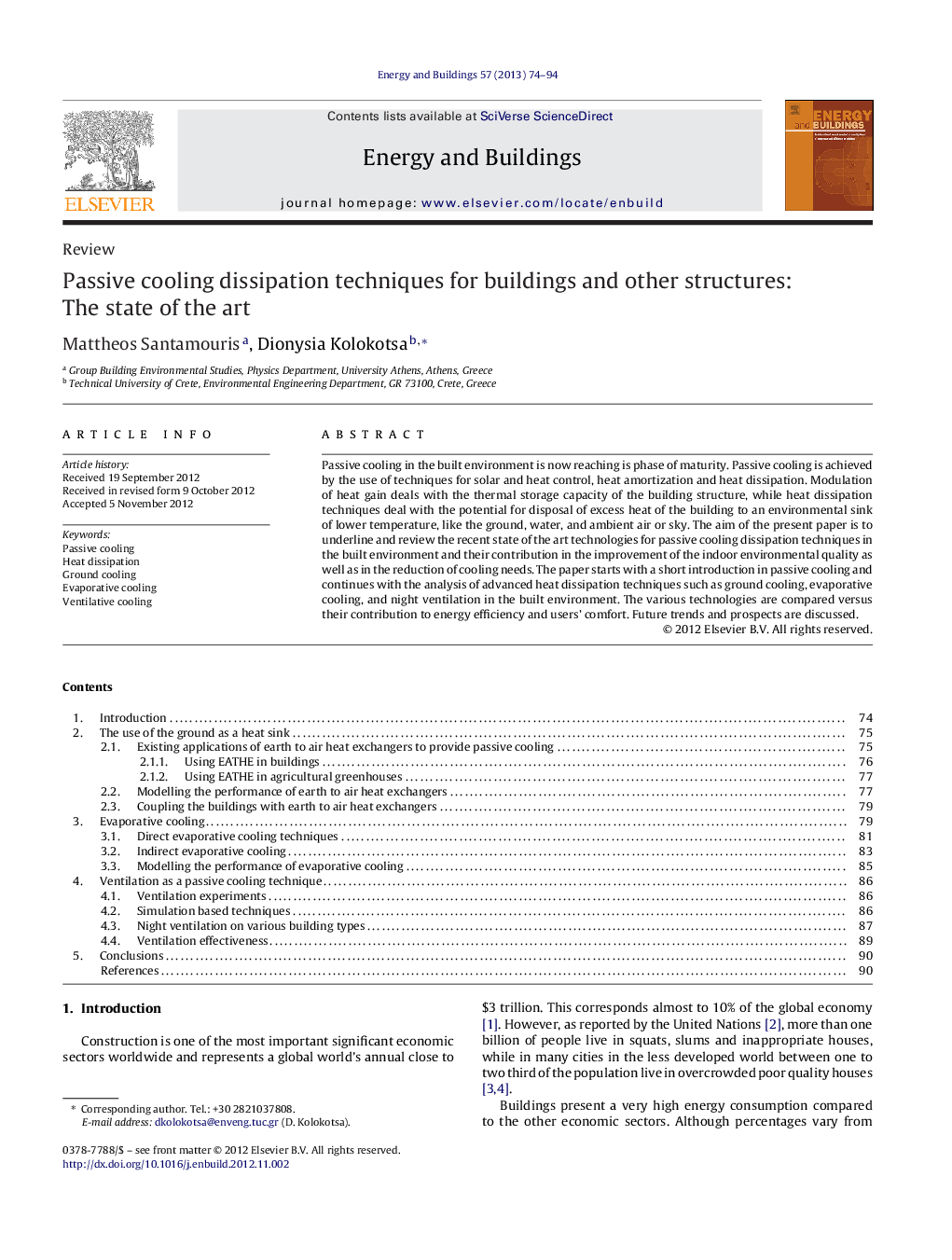| کد مقاله | کد نشریه | سال انتشار | مقاله انگلیسی | نسخه تمام متن |
|---|---|---|---|---|
| 263565 | 504078 | 2013 | 21 صفحه PDF | دانلود رایگان |

Passive cooling in the built environment is now reaching is phase of maturity. Passive cooling is achieved by the use of techniques for solar and heat control, heat amortization and heat dissipation. Modulation of heat gain deals with the thermal storage capacity of the building structure, while heat dissipation techniques deal with the potential for disposal of excess heat of the building to an environmental sink of lower temperature, like the ground, water, and ambient air or sky. The aim of the present paper is to underline and review the recent state of the art technologies for passive cooling dissipation techniques in the built environment and their contribution in the improvement of the indoor environmental quality as well as in the reduction of cooling needs. The paper starts with a short introduction in passive cooling and continues with the analysis of advanced heat dissipation techniques such as ground cooling, evaporative cooling, and night ventilation in the built environment. The various technologies are compared versus their contribution to energy efficiency and users’ comfort. Future trends and prospects are discussed.
► The role of passive cooling in the urban environment is reviewed.
► Earth cooling techniques and applications are analysed.
► Ventilative cooling techniques and applications are reviewed.
► The role of evaporative cooling as heat dissipation technique for buildings is discussed.
► The strengths and limitations of the use of passive cooling as heat dissipation technique are reviewed.
Journal: Energy and Buildings - Volume 57, February 2013, Pages 74–94